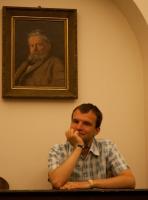Article,
Detecting community structure in networks
The European Physical Journal B, 38 (2): 321--330 (Mar 1, 2004)
DOI: 10.1140/epjb/e2004-00124-y
Abstract
There has been considerable recent interest in algorithms for finding communities in networks--groups of vertices within which connections are dense, but between which connections are sparser. Here we review the progress that has been made towards this end. We begin by describing some traditional methods of community detection, such as spectral bisection, the Kernighan-Lin algorithm and hierarchical clustering based on similarity measures. None of these methods, however, is ideal for the types of real-world network data with which current research is concerned, such as Internet and web data and biological and social networks. We describe a number of more recent algorithms that appear to work well with these data, including algorithms based on edge betweenness scores, on counts of short loops in networks and on voltage differences in resistor networks.
Tags
- betweenness,
- centrality
- community
- community_identification_algorithm
- community_structure,
- detection
- diss
- dynamics_of_social_systems
- graph_partitioning
- imported
- internet
- networks
- networks,
- networks_and_genealogical_trees
- social
- social-science-related-work
- structure
- world_wide_web









